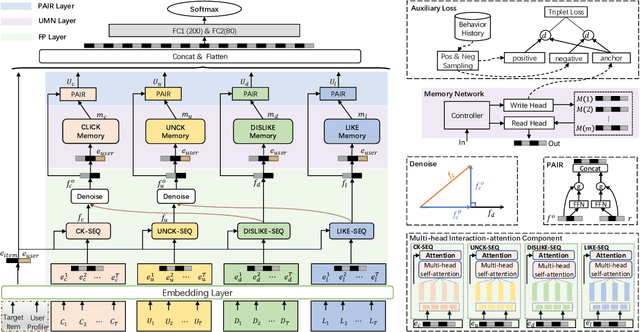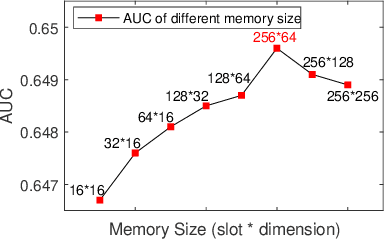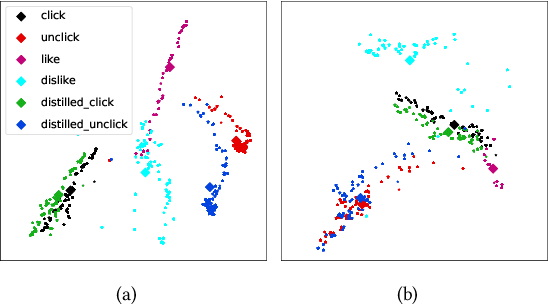Zhenqi Sun
Denoising User-aware Memory Network for Recommendation
Jul 12, 2021



Abstract:For better user satisfaction and business effectiveness, more and more attention has been paid to the sequence-based recommendation system, which is used to infer the evolution of users' dynamic preferences, and recent studies have noticed that the evolution of users' preferences can be better understood from the implicit and explicit feedback sequences. However, most of the existing recommendation techniques do not consider the noise contained in implicit feedback, which will lead to the biased representation of user interest and a suboptimal recommendation performance. Meanwhile, the existing methods utilize item sequence for capturing the evolution of user interest. The performance of these methods is limited by the length of the sequence, and can not effectively model the long-term interest in a long period of time. Based on this observation, we propose a novel CTR model named denoising user-aware memory network (DUMN). Specifically, the framework: (i) proposes a feature purification module based on orthogonal mapping, which use the representation of explicit feedback to purify the representation of implicit feedback, and effectively denoise the implicit feedback; (ii) designs a user memory network to model the long-term interests in a fine-grained way by improving the memory network, which is ignored by the existing methods; and (iii) develops a preference-aware interactive representation component to fuse the long-term and short-term interests of users based on gating to understand the evolution of unbiased preferences of users. Extensive experiments on two real e-commerce user behavior datasets show that DUMN has a significant improvement over the state-of-the-art baselines. The code of DUMN model has been uploaded as an additional material.
Identification of mental fatigue in language comprehension tasks based on EEG and deep learning
Apr 14, 2021



Abstract:Mental fatigue increases the risk of operator error in language comprehension tasks. In order to prevent operator performance degradation, we used EEG signals to assess the mental fatigue of operators in human-computer systems. This study presents an experimental design for fatigue detection in language comprehension tasks. We obtained EEG signals from a 14-channel wireless EEG detector in 15 healthy participants. Each participant was given a cognitive test of a language comprehension task, in the form of multiple choice questions, in which pronoun references were selected between nominal and surrogate sentences. In this paper, the 2400 EEG fragments collected are divided into three data sets according to different utilization rates, namely 1200s data set with 50% utilization rate, 1500s data set with 62.5% utilization rate, and 1800s data set with 75% utilization rate. In the aspect of feature extraction, different EEG features were extracted, including time domain features, frequency domain features and entropy features, and the effects of different features and feature combinations on classification accuracy were explored. In terms of classification, we introduced the Convolutional Neural Network (CNN) method as the preferred method, It was compared with Least Squares Support Vector Machines(LSSVM),Support Vector Machines(SVM),Logistic Regression (LR), Random Forest(RF), Naive Bayes (NB), K-Nearest Neighbor (KNN) and Decision Tree(DT).According to the results, the classification accuracy of convolutional neural network (CNN) is higher than that of other classification methods. The classification results show that the classification accuracy of 1200S dataset is higher than the other two datasets. The combination of Frequency and entropy feature and CNN has the highest classification accuracy, which is 85.34%.
 Add to Chrome
Add to Chrome Add to Firefox
Add to Firefox Add to Edge
Add to Edge